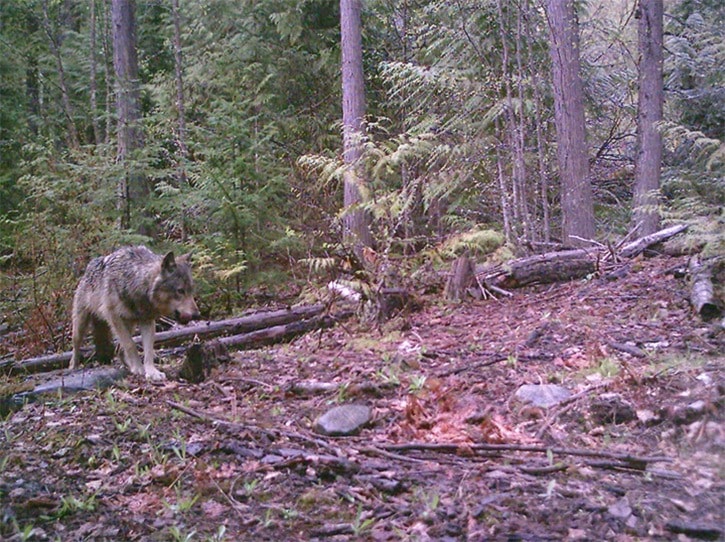Two environmental groups are challenging the legality of the province's controversial wolf cull program.
Pacific Wild and Valhalla Wilderness Society have filed an application for a judicial review to determine whether the provincial government’s decision to cull wolves reasonably constitutes proper management of wolves.
“To date, the province has neglected to protect and restore sufficient habitat for endangered caribou,” said Ian McAllister, Executive Director of Pacific Wild. “We are asking the court to review whether, in the absence of sufficient, enforced habitat protection, culling wolves constitutes proper wildlife management.”
In January 2015, the B.C. government launched the five-year wolf cull program in the South Peace and South Selkirk regions. Government contractors are paid to radio-collar wolves in the spring so snipers in helicopters can track and kill wolves throughout the winter.
In 2015, 84 wolves were killed, although the original goal was to remove 184 wolves. Bad weather and a low snowpack made it more difficult for the province to reach its initial goal.
It is still unclear what this year’s goal is and how many wolves have been killed so far.
Greig Bethel, a Spokesperson with the Ministry of Forests, Lands and Natural Resource Operations, told Lakes District News that the number of wolves to be removed in 2016 will depend on how quickly wolves repopulate the areas, and how effective the program is at removing those that remain in the area from 2015.
Bethel said the ministry will not be reporting results until the spring.
The BC SPCA is also speaking out against the wolf cull, saying there is a lack of credible scientific evidence to support it and that it cannot be achieved humanely.
“Killing from helicopters, even by the most skilled marksman, causes excessive stress during chase and there is no way to confirm death was quick and painless,” says Dr. Sara Dubois, the BC SPCA’s Chief Scientific Officer.
Dubois states culling can fracture pack social structures and create an ecological imbalance for other species in the area.
“There is little evidence that removing all wolves in the area will allow the caribou population to recover and stabilize,” says Dubois. “It’s just a hope - too little too late.”
According to the province, the operational plans for both the Selkirks and South Peace wolf cull have been independently peer-reviewed. In addition, the province says the wolf cull program is being employed in conjunction with ongoing habitat protection efforts.
“Habitat recovery continues to be an important part of caribou recovery, but cannot address the critical needs of these herds in the short term,” said the province in a press release.
With a wolf population estimated to range between 5300 and 11,600, the provincial government says wolf populations are plentiful, and that the grey wolf is not a species of concern in B.C.
“The risk of removing the number of wolves recommended is very low, whereas the risk to pertinent caribou populations of doing nothing is very high.”
According to the Wildlife Defence League, a B.C.-based conservation organization, the second year of the wolf cull in the South Selkirk region is already over. The organization alleges that all pack members, with the exception of a “Judas wolf,” have been gunned down by helicopter.
The Wildlife Defence League alleges that the “Judas wolf” is being kept alive year after year to lead hunters to wolf packs.
“He or she is left to pack up with a new family, who are deliberately baited into the territory,” said Tommy Knowles, Campaign Director for Wildlife Defence League. “The next spring, the Judas wolf’s new pack is slaughtered.”
The province has denied the Wildlife Defence League’s allegations that wolf cull contractors have kept alive a Judas wolf.
According to the province, the wolf cull program will only be evaluated after its fourth year.
